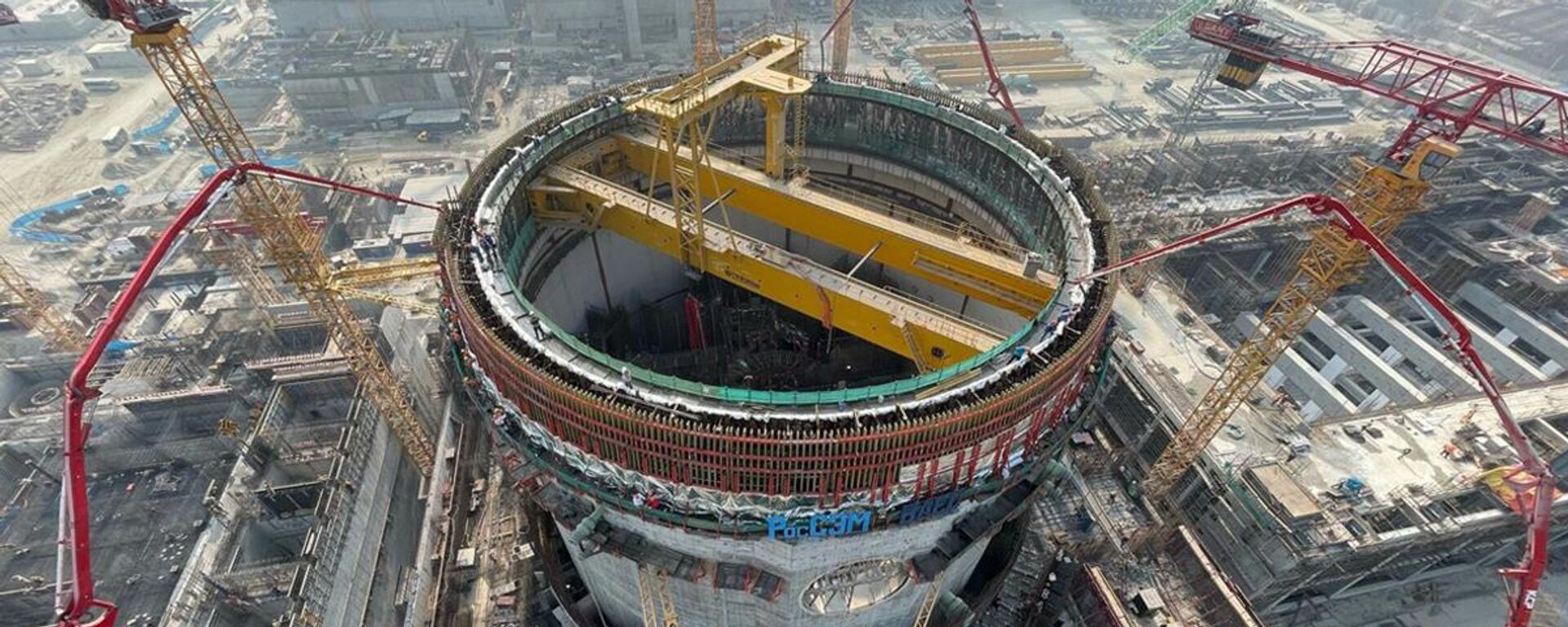https://sputniknews.in/20230901/indias-first-indigenous-700-mw-nuclear-plant-turns-fully-operational--3973446.html
India’s First Indigenous 700 MW Nuclear Plant Turns Fully Operational
India’s First Indigenous 700 MW Nuclear Plant Turns Fully Operational
Sputnik India
Prime Minister Narendra Modi said that India’s first indigenously developed nuclear plant is now operating at its full capacity.
2023-09-01T16:06+0530
2023-09-01T16:06+0530
2023-09-01T16:06+0530
business & economy
narendra modi
india
maharashtra
gujarat
nuclear weapons
nuclear energy
https://cdn1.img.sputniknews.in/img/07e7/03/10/1189038_0:87:3329:1960_1920x0_80_0_0_c955b52c9c629d3dddbc6c88781bd0a9.jpg
Indian Prime Minister Narendra Modi has said that the country's first indigenously developed nuclear plant is now operating at full capacity.The Kakrapar Unit-3 is an expansion of the existing nuclear power plant and both have 220 MWe, the fourth unit – KAPP-4, is expected to be operational by March 2024. KAPP-3 and 4 will be the country’s first pair of indigenously designed Pressurised Heavy Water Reactors (PHWRs) of 700 MWe unit size with enhanced safety features. But the KAPP-3 nuclear plants so far (until 31 August) operated at 90% capacity. It is the largest nuclear reactor in the country.For India, the operation of these reactors and all indigenous nuclear plants will play a significant role in becoming a developed country by 2047. Atomic Energy Minister Dr. Jitendra Singh in April informed parliament that central approved and financial sanction for 10 indigenous pressurised heavy water reactors of 700 MW each in fleet mode. Eight reactors will come up in Karnataka, Haryana, Madhya Pradesh, and two other nuclear reactors -- the Rawatbhata (RAPS-7 and 8) site in Rajasthan will be operated soon.The 700MWe reactors are slated to be the backbone of a new fleet of 12 reactors that the Modi government accorded administrative approval and financial sanction for in 2017. India is working to ramp up its existing nuclear power capacity of 7,480 MWe to 22,480 MWe by 2031. Currently, nuclear power capacity constitutes around two percent of the total installed capacity of 417,668 MW (31 May).
https://sputniknews.in/20230804/rosatom-plans-to-deliver-nuclear-fuel-to-rooppur-npp-in-september-3401363.html
india
maharashtra
gujarat
Sputnik India
feedback.hindi@sputniknews.com
+74956456601
MIA „Rossiya Segodnya“
2023
Deexa Khanduri
https://cdn1.img.sputniknews.in/img/07e6/0c/13/138923_52:0:533:481_100x100_80_0_0_cadf23d341691fc65ff2b22fd1afe584.jpg
Deexa Khanduri
https://cdn1.img.sputniknews.in/img/07e6/0c/13/138923_52:0:533:481_100x100_80_0_0_cadf23d341691fc65ff2b22fd1afe584.jpg
News
en_IN
Sputnik India
feedback.hindi@sputniknews.com
+74956456601
MIA „Rossiya Segodnya“
Sputnik India
feedback.hindi@sputniknews.com
+74956456601
MIA „Rossiya Segodnya“
Deexa Khanduri
https://cdn1.img.sputniknews.in/img/07e6/0c/13/138923_52:0:533:481_100x100_80_0_0_cadf23d341691fc65ff2b22fd1afe584.jpg
nuclear plant, 700 mwe kakrapar nuclear power plant unit-3, kapp-3, kakrapar unit-3, nuclear power plant, kapp 4, pressurised heavy water reactors, phwrs, nuclear power corporation of india limited, npcil, kakrapar, kapp-3, rawatbhata, raps-7,
nuclear plant, 700 mwe kakrapar nuclear power plant unit-3, kapp-3, kakrapar unit-3, nuclear power plant, kapp 4, pressurised heavy water reactors, phwrs, nuclear power corporation of india limited, npcil, kakrapar, kapp-3, rawatbhata, raps-7,
India’s First Indigenous 700 MW Nuclear Plant Turns Fully Operational
Deexa Khanduri
Sputnik correspondent
Pressurised heavy water reactors, which use natural uranium as fuel and heavy water as a moderator, constitute the mainstay of India’s nuclear power fleet. Currently, the biggest reactor of indigenous design is the 540 MWe PHWR deployed in Maharashtra.
Indian Prime Minister Narendra Modi has said that the country's first indigenously developed nuclear plant is now operating at full capacity.
On Thursday, Modi congratulated scientists and engineers on social media and said: “The first largest indigenous 700 MWe (megawatts electrical) Kakrapar Nuclear Power Plant Unit-3 (KAPP-3) in Gujarat starts operations at full capacity”.
The
Kakrapar Unit-3 is an expansion of the existing nuclear power plant and both have 220 MWe, the fourth unit –
KAPP-4, is expected to be
operational by March 2024.
KAPP-3 and 4 will be the country’s first pair
of indigenously designed Pressurised Heavy Water Reactors (PHWRs) of 700 MWe unit size with enhanced safety features.
"Unit-3 or KAPP-3 has started Commercial Operation from June 30, 2023", stated the Nuclear Power Corporation of India Limited or NPCIL, which operates the nuclear plants in the country, on its website.
But the KAPP-3 nuclear plants so far (until 31 August) operated at 90% capacity. It is the largest nuclear reactor in the country.
For India, the operation of these reactors and all indigenous nuclear plants will play a significant role in becoming a developed country by 2047. Atomic Energy Minister Dr. Jitendra Singh in April informed parliament that central approved and financial sanction for 10 indigenous pressurised heavy water reactors of 700 MW each in fleet mode. Eight reactors will come up in Karnataka, Haryana, Madhya Pradesh, and two other nuclear reactors -- the
Rawatbhata (RAPS-7 and 8) site in
Rajasthan will be operated soon.
The 700MWe reactors are slated to be the
backbone of a new fleet of 12 reactors that the Modi government accorded administrative approval and financial sanction for in 2017.
India is working to ramp up its existing nuclear power capacity of 7,480 MWe to 22,480 MWe by 2031. Currently,
nuclear power capacity constitutes around two percent of the total installed capacity of 417,668 MW (31 May).



